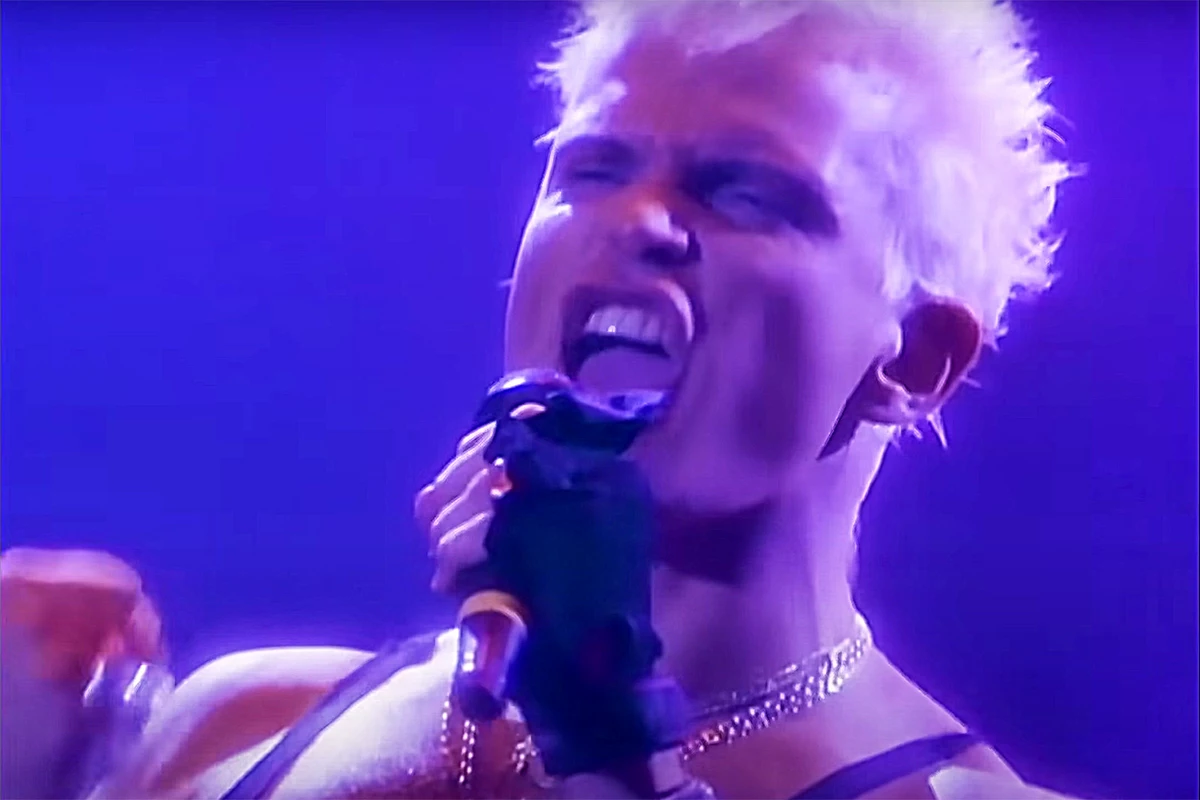Young Billy Idol, then known as William Michael Albert Broad, was 15 years old when he discovered a new meaning of life in the alley behind a charity shop.
“You’re a virgin, aren’t you?” Idol recalled a woman asking in his 2015 memoir Dancing With Myself. “‘No, I’ve done it before,’ I lied as we walked up the hill for a tumble. … As we went at it, ‘Mony Mony’ by Tommy James and the Shondells was playing on someone’s transistor radio nearby.”
Unsurprisingly, Idol says “that song has always had special significance to me.” But it wasn’t just the warm memories: “From the first time I heard it, I liked Tommy James’s voice, and always thought maybe I could get away with it too.”
“Mony Mony” returned to mind soon after he moved to the U.S. in 1981, leaving his Generation X career behind in a risky bid to reinvent himself. At a meeting with a Chrysalis Records promotions officer, Idol raised the idea of recording a cover version for his next single, although he first discussed classic number “Shout.”
“What I really had in mind was doing a version of ‘Mony Mony’ that would keep them dancing on the floors of the late-night New York clubs I had been frequenting,” he said. “I knew my strategy had worked when he was lukewarm to the idea [of “Shout”], but then got excited when I mentioned ‘Mony Mony.’”
Listen to Tommy James’ Version of ‘Mony Mony’
The label wanted to include the track on his first solo release, an EP to be titled Don’t Stop. “For me, it was a way to get out of the freezing East Coast winter,” Idol added, since the recording sessions would be overseen by producer and drummer Keith Forsey in Los Angeles.
“The plan was to work on the arrangements of the songs in a small rehearsal studio before recording them,” Idol added. “We went through the arrangements of all the songs, but spent the most time on ‘Mony Mony.’”
He was determined to replicate Tommy James rhythm section, which Idol said “sounded like a tape loop,” and that’s why he hired Quiet Riot drummer Frankie Banali and bassist Mick Smiley.
“I had come to realize how important it is to be working with great musicians and talented people,” Idol explained. “Keith and I had agreed that ‘Mony Mony’ should have an R&B feel, so we decided to add some black female background singers. We created a riff for the middle section, where we could put in a vocal arrangement later on.”
Idol also tracked “Baby Talk” and “Untouchables” during the same session. “Not bad for a single day’s work!” he said.
Listen to Billy Idol’s ‘Mony Mony’
Mixing of “Mony Mony” took place during an extended overnight session, where Idol and his colleagues continued to pursue the feel they’d developed – which he described as part R&B, part disco, part techno, part rock and also “all of these ingredients combined into a single sound. It was something I enjoyed doing, and it was a new sound and feel that went together very well with the lyrics and music I was now writing.”
His next step was to “take it back to New York and see what happened.” Idol brought a copy of the song to the Ritz club on a quiet Tuesday night, with almost no one in attendance and almost none of them dancing.
“I talked to the DJ, a fan of ‘Dancing With Myself,’ and convinced him to give ‘Mony Mony’ a spin. He placed the needle to the vinyl and suddenly, the jaded dancers who had been hugging the wall came to life. Instantly, the dance floor was filled with bodies doing ‘60s moves like the Swim, the Donkey Trot, and the Mashed Potato. Everybody was into it! I had my follow-up to ‘Dancing With Myself’ … and any questions I’d had about my decision to move to America began to fade.”
“Mony Mony” achieved a very respectable No. 7 placing in the fall of 1981 – but the story wasn’t over yet. “My first solo effort was a cool little record,” Idol said of his initial EP. “I was truly on my own, crossing over from one gig to another somehow, without too much of a bump. It didn’t take long, and there it was in the New York record bins. The divider label read like a command: BILLY IDOL: DON’T STOP.” Of course, he never did. Then “Mony Mony” returned to mind a few years later.
Watch Billy Idol’s Live ‘Mony Mony’ Video
“It was about midway through [a] tour and Mike Bone, the new head of Chrysalis Records, was looking for a way to make an immediate mark,” Idol said, explaining that the exec had always felt the studio version of “Mony Mony” hadn’t received the exposure it deserved.
He was correct: a “more guitar-oriented” version went to No. 1 on Nov. 21, 1987. Incidentally, it knocked another Tommy James song off the top position – pop signer Tiffany’s version of “I Think We’re Alone Now.”
Idol’s update of “Mony Mony” appeared on the compilation Vital Idol, which also reached the Top 20. “The luck of the Irish was still with me,” Idol observed, before wryly referring to the issues his career was about to face: “Or was it?”
Meanwhile, his passionate fans had created their own tradition around “Mony Mony,” adding lyrics to complete a cruder rendition that perhaps harked back to Idol’s original encounter. Reports suggested the alternate lyrics (including the line “Hey, say what, get laid, get fucked!”) led to the song being banned at high school dances – but you’ll still hear those lines at Idol concerts. Idol even incorporated them into a third version of the track, released in 2018.
Listen to Billy Idol’s NSFW Version of ‘Mony Mony’ Remix
Musicians Who Are Totally Lying About Their Names
Their names are forever etched in our collective memory – or are they?
You Think You Know Billy Idol?



